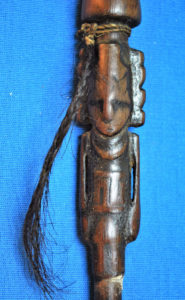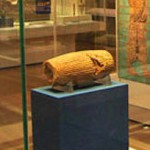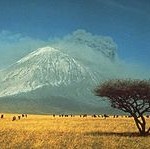 By Michael Price
By Michael Price
When José Capriles arrived in 2008 at the Cueva del Chileno rock shelter, nestled on the
western slopes of Bolivia’s Andes, he didn’t know what he would find within. Sweeping
aside layers of fresh and ancient llama dung, he found the remains of an ancient burial
site: stone markers suggesting a body had once been interred there and a small leather
bag cinched with a string. Inside was a collection of ancient drug paraphernalia—bone
spatulas to crush the seeds of plants with psychoactive compounds, wooden tablets inlaid
with gemstones to serve as a crushing surface, a wooden snuffing tube with a carved
humanoid figure, and a small pouch stitched together from the snouts of three foxes.
Now, more than a decade later, Capriles—an anthropologist at Pennsylvania State
University in State College—and colleagues have discovered that the 1000-year-old bag
contains the most varied combination of psychoactive compounds found at a South
American site, including cocaine and the primary ingredients in a hallucinogenic tea
called ayahuasca. The contents suggest the users were well versed in the psychoactive
properties of the substances, and also that they sourced their goods from well-established
trade routes.
“Whoever had this bag of amazing goodies … would have had to travel great distances to
acquire those plants,” says Melanie Miller, lead author of a new study on the discovery
and a bioarchaeologist at the University of Otago in Dunedin, New Zealand. “[Either
that], or they had really extensive exchange networks.”
Nearly every culture on Earth has dabbled with consciousness- and perception-altering
substances. Indigenous groups from Central and South America have used hallucinogens
such as peyote and psilocybin mushrooms during rituals and religious ceremonies for
thousands of years. Archaeologists have uncovered hundreds of items that provide a
glimpse into these ancient practices, but few are as complete as the Bolivian find.
In 2010, Miller joined the team to help chemically analyze the items, which had been
nearly perfectly preserved in the arid conditions of the 4000-meter-high mountains.
Radiocarbon dating revealed that the outer bag was made around 1000 C.E. Next, Miller
carefully unwound the fox snout pouch and emptied its dust and debris onto a piece of
aluminum foil. Using a technique frequently used in modern illicit drug testing called
liquid chromatography tandem mass spectrometry, she and her fellow researchers hunted
for chemical signatures in the sample. They identified at least five psychoactive
substances: cocaine, benzoylecgonine, bufotenine, harmine, and dimethyltryptamine.
Harmine and dimethyltryptamine are the main ingredients in ayahuasca, used
ceremonially for centuries by indigenous South Americans. Miller says their presence
alongside the snuffing tube and tablet may mean that people inhaled these chemicals long
before they were brewed into a beverage.
The mixture’s origins also offer clues to the trade routes of the people who occupied the
high plains. Several of the compounds come from the plant genus Anadenanthera—also
known as vilca, cebil, or yopo—which grows widely through South America, but not in
this region of the Andes. Similarly, the likely source of the harmine is a lowland
Amazonian species.
Miller says it’s possible that the mixture of compounds was unique to the region. The fact
that at least two of the ingredients are known to be used in tandem in ayahuasca raises the
possibility that this shaman was selecting plant combinations for specific mind-altering
effects , they report today in the Proceedings of the National Academy of Sciences.
“Maybe they were mixing multiple things together because they realized when they’re
combined, they have a whole different set of experiences,” Miller says.
When indigenous South Americans began to brew ayahuasca is still a major mystery,
says Christine VanPool, an anthropologist at the University of Missouri in Columbia who
wasn’t involved in the work. She’s intrigued by the idea they may first have discovered
its properties by inhaling its key compounds. Shamans “say they’ve had [ayahuasca] for a
very long time. So in some ways, I wasn’t surprised,” she says. But because
archaeological evidence has been lacking, the new find is “exciting.”
https://www.sciencemag.org/news/2019/05/archaeologists-find-richest-cache-ancient-
mind-altering-drugs-south-america















